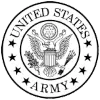Available 24/7
Professional Instruction
Free Training Materials






Course Details
The DB2 Family Fundamentals course is a 2-day course that is designed to provide students with information about the functions of IBM's DB2, a relational database manager which may be installed under a variety of operating systems on many hardware platforms.
DB2 runs under the z/OS, VM, Linux, UNIX, and Windows operating systems, to name a few.
The course discusses how the DB2 products provide services. The focus of the course is on the services DB2 provides and how we work with DB2, not on its internal workings.
Topics covered in the course include:
- Listing and describing the major components of IBM's relational database, DB2
- Explaining the characteristics of a DB2 table
- Relating the basic concepts of data modeling
- Comprehending the processing instructions given to DB2 via simple SQL statements
- Listing and describing several ways to build (write) and execute SQL statements
- Listing and describing steps needed to imbed SQL statements in an application program
- Explaining some of the functions performed by, and the responsibilities of, database and system administrators
- Establishing a base for more specialized DB2 education
Target Student:
This introductory course is for students needing an introductory knowledge of DB2, and students preparing for advanced and specialized DB2 education.
Prerequisites:
No prerequisites are required for this course.
Course Outline
Understanding a Table
- Identify the advantages of a relational database
- Define a relation
- Name the language used to talk to a relational database manager (RDBM)
- List three characteristics assigned to each column
- Define the tasks performed by DB2 when running an application
- Define the roles that are performed within DB2
Data Modeling and Database Design
- State the purpose of a business model
- Identify an Entity-Relational Diagram (ERD) model
- List several DB2 column data types
- Identify non-standard column and table names
- Identify the characteristics of a primary key and a foreign key
- State the purpose of referential integrity
- State the purpose of triggers
How does a User use DB2?
- List several ways to talk to DB2
- List multiple ways to generate an SQL statement
- List several ways to ADD, REMOVE, or CHANGE table rows
- List several ways to READ data and produce reports
How does a Programmer use DB2?
- List the steps needed to create a test environment
- List the necessary steps to coding SQL in a program
- Describe the purpose of SQL delimiters
- Describe the purpose of an SQLCA
- List the steps involved in preparing a program for execution
- State the differences between static and dynamic SQL
What does an Administrator do in DB2?
- List some of the tasks performed by a DB2 System Administrator: Identifying the DB2 product, Installing DB2, Creating subsystems/instances, databases and table spaces, Authorizing, and Monitoring
- List some of the tasks performed by a DB2 Database Administrator: Creating, altering and dropping tables, views and indexes, Planning locking strategies, Running utility jobs and Authorizing
Information Management with DB2
- List several planning considerations for distributing data
- List some of the skills required to successfully distribute data
- Differentiate between remote unit of work, distributed unit of work, and distributed request
- List some of the security concerns when dealing with distributed data
- List some of the other products that interface with DB2
Agenda
Day 1
- Welcome
- Understanding a Table
- Data Modeling and Database Design
- How does a User use DB2?
Day 2
- How does a Programmer use DB2?
- What does an Administrator do in DB2?
- Information Management with DB2
Please check the course description to find prerequisite information.
Testimonials
This was the class I needed.
The instructor Jeff took his time and made sure we understood each topic before moving to the next. He answered all of our questions, and I don't know about the rest of the students, but was very pleased with this experience.
I finally understand how to use Excel.
-Amanda T (Yale New Haven Hospital).
Great class!
We were able to cover a lot of information in one day without getting overwhelmed.
-Maria R (Microsoft).
Free Repeats
Learn At Your Pace
No Travel
Professional Instruction
Affordable Pricing
Group Discounts

